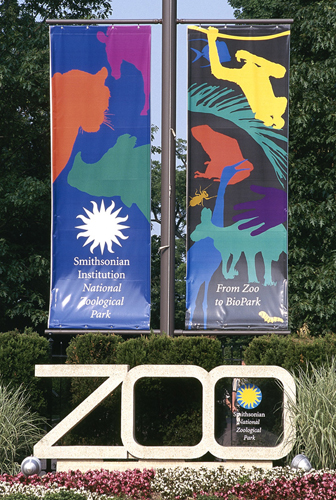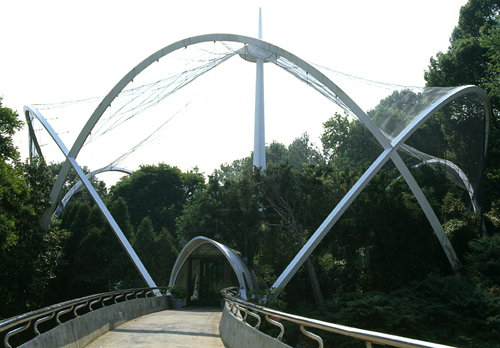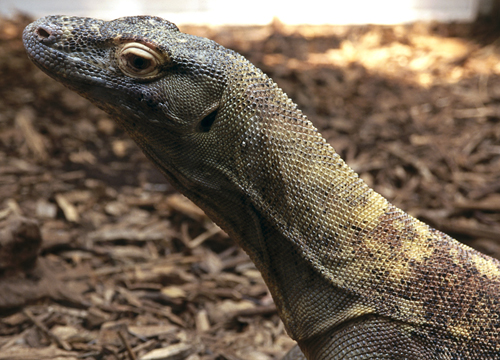One of the most visited destinations in Washington,
the National Zoo is a beautifully landscaped 163-acre urban park as well
as an innovative center for animal care and conservation. Children and
adults delight at seeing rare giant pandas, a playful Asian elephant
calf, or a Sumatran tiger cub. More than 2,700 animals live here,
increasingly housed in habitats that allow more natural behavior. The
zoo, which opened in 1889, was the first in the world to be founded
partly with the goal of preserving endangered species.
|
The zoo is a lush park for
both human visitors and its animal residents. Satisfying both presents
challenges for the zoo’s horticulturists. In the Amazonia exhibit, for
example, living avocado and cocoa trees help to re-create the tropical
environment of this diverse river basin, while cheetahs wander around a
re-creation of the grasslands of their native African habitat.
|

National Zoological Park Plan

Entrance sign
|
Most children’s tour
groups arrive between 10am and noon in the fall. If you wish to see the
popular giant pandas, visit after 2pm when the lines tend to be shorter.
However, the arrival of the baby has added to the pandas’ popularity.
|
|
Top 10 FeaturesGiant Pandas Mei
Xiang and Tian Tian, two giant pandas from China, made their first
appearance at the zoo in 2001. Their lively curiosity, social
interactions, and physical beauty are fascinating. Their offspring, Tai
Shan, was born in July 2005. Sumatran Tigers This
extremely endangered species has been successfully bred at the National
Zoo. Estimates put the population of these dark, striped beauties at
less than 500 in the wild and 170 in zoos. Elephant House A
variety of animals including Asian elephants, hippos, and giraffes are
free to roam here. View-points are close enough to appreciate their
great size. Bird House and Great Flight Exhibit Here,
numerous species of birds display their spectacular colors and elegant
motions. The flight exhibit is a netted structure that gives even birds
of prey enough headroom to show off.

Golden Lion Tamarins In
summer, these squirrel-sized primates run free in the trees around
Valley Trail. These Brazilian animals have been the subject of one of
the most successful conservation efforts. Think Tank Orangutans
are taking part in a long-term study of their cognitive and language
abilities in this large building. Visitors can watch researchers
investigate the animals’ use of symbols. Amazonia This
exhibit recreates the tropical habitat of the Amazon basin and features
a variety of animals including piranhas, poison arrow frogs, titi
monkeys, and a two-toed sloth. Red Wolves Related
to the gray wolves, the endangered red wolves are native to America.
Currently, there are only around 300 in existence and of these,
approximately 220 live in captivity. Komodo Dragons These
lizards can grow as large as 200 lbs (90 kg) and 10 ft (3 m) long. The
zoo has been important in preserving these predators; in 1992, 13
dragons hatched here, the first born outside their native Indonesia.

Great Ape House Western
lowland gorillas are among our closest relatives, sharing about 98
percent common genome. Their deliberate movements and human-like manner
mesmerize observers. The primates are outdoors in the mornings and
mid-afternoons.
|